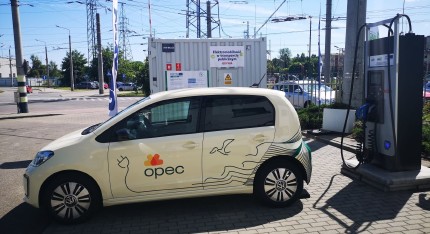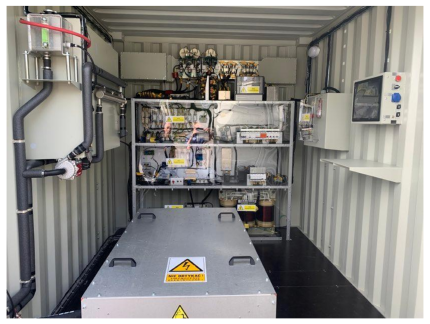Application of Traction Supply System for Charging Electric Cars
10.03.2022
The development of electromobility involves the development of electric cars charging infrastructure. The increase of the number of chargers poses new demands for the AC power grid, especially regarding its capacity of delivering high peak power. As an alternative for the public AC power grid, urban electrified transportation systems (trams, trolleybuses, and metro) can be used for supplying electric cars chargers.
The analysis, prepared by the colleagues of Gdansk University of Technology, discusses four options of integrating electric cars chargers with a traction power supply system. The option of connecting the charger to the traction overhead supply line has been selected due to the spatial availability of the power source and possibility to use regenerative braking energy for charging. A set of criteria has been developed for analysing the capability of the traction supply system to feed electric cars chargers. An exemplary feasibility analysis was carried out for trolleybus traction supply system in Gdynia, Poland. Gdynia, with nearly 250,000 inhabitants, has the trolleybus transportation system featured by the total length of the overhead line of approximately 100 km.

Photo: Mobile charging station for electric cars powered by the trolleybus network (PKT)

Photo: DC/AC converter for conversion converting trolleybus 600 V DC overhead line voltage (PKT)
The photo illustrates the DC/AC converter for conversion converting trolleybus 600 V DC overhead line voltage into a 400 V AC commercial standard. It is operating in Gdynia, Poland and the battery-based energy storage is in the box placed on the floor.
The power conversion process is split into two stages. First, the system uses the DC/DC converter, which provides galvanic separation from the traction network voltage and regulates the battery charging current [2]. Next, the DC/AC converter delivers the power to the charging station via an additional transformer used for insulation purposes. The charging station is supplied by 3 × 400 V AC, which is a commercial standard. Hence, a typical fast charger for electric cars was used.

Photo: General connection scheme of the charging station and the trolleybus power supply line (PKT)
The solution of using a trolleybus traction system to supply electric vehicle chargers proves the technological maturity of the required equipment. However, the selection of target locations of similar solutions requires comprehensive analysis. In order to determine the possibilities of using the trolleybus network to supply charging stations, an analysis of the load level and voltage in overhead supply lines of the trolleybus system was carried out. Supplying the charging station from the trolleybus overhead line is associated with an increase in the overhead line load. The following limitations for this increase should be considered at particular supply sections:
- Maximal current load,
- Maximal allowable voltage drop,
- Maximal acceptable transmission losses.
The analysis presented in detail the usage of data recorded from the trolleybus traction supply network in Gdynia. In addition, data from trolleybuses on-board recorders were used.
The impact of installing the charging station on specific traction supply parameters has been predicted using present-state recordings of electrical parameters and assumed charging station power. The study shows that every supply section of the considered trolleybus traction system has the capability of installing a fast-charging station, which provides opportunities of expanding the charging stations network in Gdynia.
The full publication can be found HERE.
Background photo: PKT
Authors of the article: Mikołaj Bartłomiejczyk and Leszek Jarzebowicz from the Gdansk University of Technology, and Roman Hrbáč from VSB - Technical University of Ostrava.
